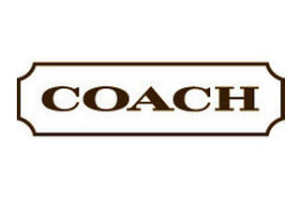 Novice investors often use a simple thought process when it comes to buying stocks. The logic goes like this:
Novice investors often use a simple thought process when it comes to buying stocks. The logic goes like this:
1. A new company has entered a market and is stealing market share from others because buyers prefer their products.
2. To capitalize on this new company’s growth, I should buy their shares.
This logic works most of the time, but not all of the time. This is because companies that are large enough to be publicly traded have already passed the stage where they are seeing explosive growth as they capture a larger portion of the marketplace. In other words, everyone buying and selling shares in the company knows that the new entrant is stealing marketshare—but they have different opinions on how fast that growth will occur, and how long it will last.
Because of this dynamic, stocks will generally outperform their peers in a sector if their growth rates are faster than the average expectations of market participants. This is why quarterly earnings and revenue “beats” are so important—when the company proves that it is growing greater than everyone expects, its stock will rise in value.
The opposite is also true—when companies fail to beat expectations, the stock will underperform. As a result, companies that disappoint the market will see their shares fall or raise below the rate of the broader index.
Because of this relationship between market expectations and stock price, simply buying a company that is stealing marketshare at any time will not work. Time horizons, discount rates, and an understanding of shifts in the marketplace is essential for market participants to beat the market.
This dynamic between growth and market expectations has recently played out with two rivals in the retail sector: Michael Kors (KORS) and Coach (COH) recently announced earnings, with very different numbers and different market responses.
Starting with KORS: the company reported its 1Q revenues grew 43% to $919m and EPS rose to 91c per share, causing the stock to rise in pre-market. But it quickly fell, and closed substantially lower on Monday after releasing its earnings, and remains down from its pre-earnings price point—and down for the full year, even after a massive beat and nearly 20% price growth in February.
Meanwhile, COH has seen the opposite action. On Tuesday, COH reported revenues had fallen over 6% year-over-year to $1.1b while EPS fell 30 cents from a year ago (but was above expectations). The stock rose over 4% on the news, and has been trading up on an otherwise bearish day.
The buy-growth logic of the novice investor would not work when applied to these two companies, and for good reason. KORS, with its P/E ratio of 22, has already priced in substantial growth both before and after the correction. COH, with a P/E ratio less than half that of KORS, is pricing in a contraction. Even as COH loses market share to KORS, its stock can still go up if that rate of decline is slower than the market expects. Additionally, KORS can fall further if its market share growth begins to be challenged by another brand that tries to replace both COH and KORS. In the fashion world, this happens all the time.
Investors who are looking for a strong money-making operation that is cash flow positive would not discredit COH for its falling business. It still makes money, and with a 20% non-GAAP operating margin for the full year, it will continue to make money for the foreseeable future. Additionally, COH can take marketshare where it is trendy and is growing: while North American sales fell 15%, international sales rose 7% in the quarter, with China sales rising 20%. If COH can grow its international operations at a faster rate, its current EPS of 10.9 will look to be a bargain. Of course, the opposite may happen; Chinese consumers could fall out of love with Coach and look for other brands.
Upon first glance, a bet on KORS or on COH after earnings would look like a bet on the move of dollars from one market participant to another. More closely, one realizes that the more sophisticated bet is on the margins between market expectations and market reality.
